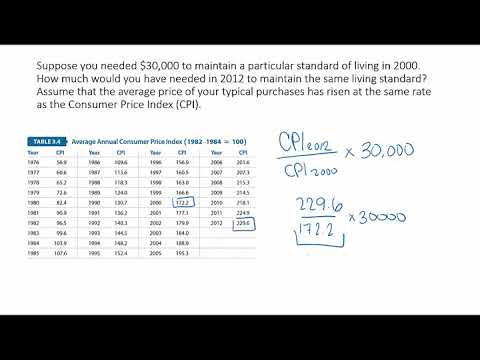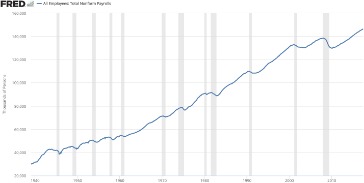Contents
In addition, your capital is tied up in a single position for a longer period of time; you must be willing to be illiquid for periods of time until it is the appropriate time to exit your position. The main benefit of swing trading is that persons who have full time jobs or can’t trade full time can still participate in the markets and make money which is why this type of trading is so popular. On the other hand, swing trading is more suitable for traders who are able to see the big picture and don’t have the time to sit in front of the computer to monitor charting systems. At the end of the day, the trader will simply exit all trading positions which means once they shut down their computer systems, they don’t have to worry about any news and how it impacts the market. Whichever trading strategy you prefer, profitability will depend on your skills in fundamental analysis and technical analysis. The key difference between these three styles is duration — the length of time a trader holds an open position in the market.

There is no legal requirement for minimum account balances for day trading futures, but your broker might require that you keep a minimum in a margin account as with the other types of day trading. Choosing day trading or swing trading also comes down to the trader’s personality and preference. Consistent results only come from practicing a strategy under numerous different market scenarios. That takes time and should involve making hundreds of trades in a demo account before risking real capital.
It’s because they open lesser positions, the transaction fees are also less compared to day traders. However, they hold their positions overnight, which subject to overnight funding charges. A day trader keeps the cost minimum because they have opened multiple positions in the market. This is one of the major reasons for holding positions overnight because they are not subjected to overnight funding fees. The major day trading regulations concern the so-called pattern day trading. As per FINRA, a pattern day trader is anyone that makes more than four-day trades within 5 business days provided that those trades account for more than 6% of all trades of the margin account in question.
The My Trading Skills Community is a social network, charting package and information hub for traders. Access to the Community is free for active students taking a paid for course or via a monthly subscription for those that are not. Let’s dig deeper into their main differences and show which trading style is the best for your trading approach.
Requirements:
There are times when stocks will trend pretty hard, but this is likely in the morning after reacting to some news event. For me personally, the morning is my preferred time to trade for that reason alone. But if you are going to day trade throughout the day, the price action in Apple below will be your likely scenario. So, don’t get cute, book your profits on a consistent basis and don’t worry about the home run trades.
Above is a tabular representation of the differences between day trading and swing trading. However, a solid day trading strategy may outperform swing trading returns in a choppy or range-bound market. When comparing swing trading vs day trading, both can be consistently profitable methods of investing—as long as you maintain discipline and control your trading psychology. In our exclusive Wagner Daily report, most of our stock trades are held from several weeks to months . Note the MTG system is designed to be completely end-of-day, giving you the perfect side hustle as a swing trader.
This information helps create predictions regarding future price motion that the swing trader can use to generate profit. There is no thumb rule for minimum capital required for day trading or swing trading. One can start with Rs. 5000, or 50,000 or 5,00,000 depending on your budget. A trader should have enough capital to cover the price of a security. The capital requirements depend on the type of financial security being traded, for instance, stock, currency, commodity, derivatives, etc. Day traders are required to constantly track the market movements to spot profitable opportunities.
- Day trading may be a good choice for those who want higher profit potential, while swing trading may suit those who want a lower-stress option.
- On average you can shoot for a few percentage points all the way up to 20% and beyond.
- ⚠ Requires highly active trade management and sitting in front of a computer all day.
- The views and opinions expressed in this article are the author’s [company’s] own and do not necessarily reflect those of CoinMarketCap.
- Therefore, more often than not, a profitable day trader will need a sizeable portion of investment against their given security or asset.
With the number of price reversals in the market due to automated systems, you have to book your profits when your targets are hit. The odds of a stock trending hard in one direction for 3 or 4 hours straight may occur 20% of the time. Try it out because it’s actually a lot of fun to try out different styles. It can be an eye opening experience and is the best way to recognise what you like and dislike. Make sure to use these ideas explicitly via financial instruments, but only once you have completed a proper analysis of your own.
Swing vs Day Trading – Which Requires More Time?
The truth is that taxes on stocks are divided into two main categories—the more favorable long-term taxes, and the more punishing short-term ones. Day trading is the act of buying and selling a financial instruments within the same day or even multiple times over the course of a day. Though swing trading is not entirely safe, the risk involved is lesser than day trading. The main reason is traders have more time to make decisions in swing trading than in day trading. On the contrary, if you have recently begun your investing journey, swing trading is a better option than day trading. Moreover, if your stress tolerance level is lower and you need more time to make a decision, swing trading is more suitable.

On the other hand, if the relative strength index is oversold on the hourly time frame, then that trade might play out over a matter of days rather than weeks. Day traders typically buy and sell securities within the same day, often multiple times per day. While the amount of capital you need to have varies according to the market in which you’re trading.
Instead of relying to face-paced trends and immediate price action, swing trading is slower, more methodical, and can be seen by more investors as a safer but more boring approach. It is true that swing trading is not time consuming when compared with day trading. As a result, they will only be required to update orders once in a week finally reducing time commitment. As a result, they are able to make small profits and cap their losses without the risk of holding positions overnight. On the other hand, since swing traders keep their positions open for longer periods of time, there’s a high probability of earning more pips from the market .
How Much Time Do You Need to Trade Successfully? ⏲
Swing traders, on the other hand, use longer-term timeframes to spot “swings” in the market. While those timeframes offer fewer trading opportunities than shorter-term timeframes, they also come with less market noise and a higher success rate. As you may have observed, there is no single strategy that trumps the other on all fronts.

https://en.forexbrokerslist.site/ trading operates on the basis of “death by a thousand cuts,” where a larger number of lesser trades make up the required profit. For most traders, they are cut from the same cloth, but the critical differentiation between them is what precisely positions them to be so diverse in the way they are used to earn a profit. If you are holding trades for few minutes or few hours within one trading day, for focus lies in day trading. Once you start trading with larger capital, you quickly realize that holding positions overnight or over the weekend is not easy. However, since swing trading isn’t as time-consuming as day trading, it is possible to efficiently swing trade in addition to other engagements. The rule of thumb is that you shouldn’t rush a transition to swing trading as a primary source of income.
Best Swing Trading Indicators and Strategies
In the case of day trading, you may be subjected to more transaction fees overall and a greater need for monitoring. However, you lose the possibility of incurring a single considerable risk from swing trading. If you decide to swing trade, you might spend less time looking at chart but you are constantly exposed to the market which brings increased risk and in general it is harder to predict far to the future.
References to https://forex-trend.net/ trading are made on behalf of the BD Division of SFI and are intended only for an audience of institutional clients as defined by FINRA Rule 4512. References to exchange-traded futures and options are made on behalf of the FCM Division of SFI. Especially in day trading where you have to make time limited decisions there is no reason to clutter your charts with to much information. But those that day trade can get into positions with extremely tight stop-losses and large position size. Swing traders are usually using larger stop-losses with smaller position sizes relative to their accounts. If you want to make any money that will make trading and sitting 12 hours a day in front of a chart worth your time, the bare minimum you need in your account is $10,000.
Since https://topforexnews.org/ traders often look to make profits off price movement as minuscule as 1%, getting things exactly right is key. Day traders using moving averages to target ideal entry and exit points, since every penny matters when making these types of trades. Day traders also need a scanner to mine the market for opportunities since watching thousands of different stocks is too much for two eyeballs to handle. In either case, you need to stay informed on the markets and utilize the proper tools when implementing a short-term trading strategy like day trading or swing trading. On the other hand, swing trading is used by traders in buying securities and holding them for multiple days or weeks.

